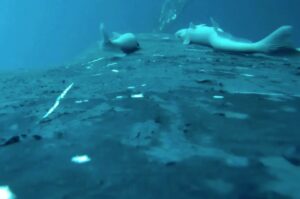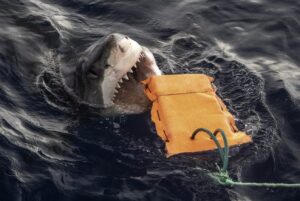Every year, long-distance walkers and cyclists tackle the iconic 1,400km from Land’s End to John O’Groats — the southernmost point in England to the northernmost point in Scotland.
This past year, as the coronavirus aborted most foreign expeditions, a few Britons decided do this route as a stopgap. Rosie Pope had to pause her run from the UK to Nepal, and Ben Cook stopped his walk across Africa. Both completed the Land’s End to John O’Groats trip.
But only on three occasions have kayakers braved the route. This year, two quite different kayak attempts are taking place.
Until now, all kayakers have paddled south to north, with the prevailing southwest wind at their backs. Glyn Brackenbury did it first, in 2013. He still holds the record for the fastest time — 32 days.
This week, Roy Beal began paddling the 1,400km route “top down”, from John O’Groats in Scotland to Land’s End. He is also trying to be the first person to paddle the distance in a wooden kayak.

The Kayak4Heroes team are training to start their paddle in August. Photo: @kayak4heroes
Beal kayaked as a child, and after a 30-year break, he picked it up again in 2010. In 2013, he kayaked from Seaton to Land’s End, about 260km along the south coast. Then in 2013, he went a little further, from Tower Bridge to Seaton.
A big step up
He doesn’t underestimate his current big step up. “The North Sea has its own reputation, as does the Irish Sea,” he admits. He will have to negotiate coastline, canals, rivers, and 128 locks. You can track him here.
Meanwhile, an ex-military team of five dubbed Kayak4Heroes hopes to become the first adaptive team to paddle the route. They will try to cover the 1,400km in 35 days, beginning in August.
The members will have to work together to overcome their various injuries and disabilities. They have chosen to paddle the standard south to north. They will begin in Cornwall and start along the coast.
Roughly 400km of their route meanders inland. The first inland section goes through the Bristol Channel, up the River Severn, and canals in the West Midlands. The second follows the Caledonian Canal in Scotland.






